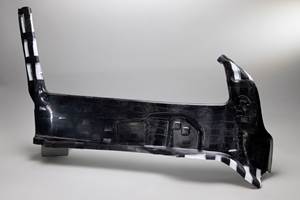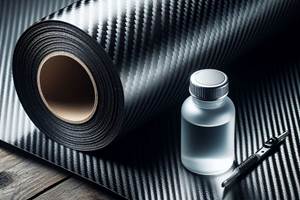Shared databases: The time is now!
Chris Ridgard (Advanced Composites Group Inc., Tulsa, Okla.) urges aerospace materials suppliers and aircraft manufacturers to join forces behind National Center for Advanced Material Performance (NCMAP) efforts to continue AGATE shared-database efforts.
One of the most troubling aspects of composite materials in the aerospace industry is that, despite efforts to remedy the problem, basic material property data with statistical validity are still, for many applications, out of reach. Historically, the generation of such data has required significant funding. Sometimes the funding is provided through a particular aircraft project or government program or alternatively, the individual airframe manufacturers have taken the financial burden upon themselves. The inevitable result is that essentially the same materials are tested over and over, with minor variations in resin content or test method. In each case, the resulting data are regarded as proprietary and never shared or released into the public domain. This wasteful practice has stagnated materials development (especially for new materials) on certified aircraft structures. Indeed, many aircraft programs no longer contain any budget for material characterization.
The absurdity of this situation was recognized in the mid-1990s by the U.S. Federal Aviation Adimn. (FAA) and NASA. NASA funded an initiative known as AGATE (Advanced General Aviation Transport Experiments, aimed at supporting the needs of the general aviation industry. The basic principle behind AGATE was shifting the responsibility for generating basic material property data from the multitude of end-users to the one material supplier producing the product. The objective was to generate data once and once only and to share the resulting database with multiple end-users. In order to achieve this objective, it was necessary to select one specification for each material (in other words, no more 37 percent resin content in the prepreg for one customer, 40 percent for another) and to standardize the test matrices and test methods to be used. The final step in the process, once the database had been generated, was for each end-user to confirm “equivalency” by executing a small, one-batch test program to verify that its process produced the same results as those achieved when the database was first generated.
While the original AGATE program was aimed at general aviation, it was recognized that the same principles could and should be applied to other classes of aircraft or space vehicles, such that composites would become commodity products in the same way that aluminum alloys have. A number of workshops were organized by the FAA with an invited list of industry participants, in order to define what was needed by the industry for a wide range of civil and military certified aircraft. These activities produced recommended practices aimed at standardizing the way that new materials should be tested and associated specifications should be written, as discussed in the January 2003 issue of HPC by the FAA’s Curt Davies.
Like the material suppliers who participated in AGATE previously, the Advanced Composites Group (ACG, Tulsa, Okla.) has recognized that the shared-database principle is the most obvious and cost-effective way to make composite materials available for use on certified aircraft structures, and has adopted this approach as a fundamental aspect of its strategy. Shared databases have either been produced or are in process for three different resin systems and several product forms, including unidirectional and woven carbon fiber prepregs, woven glass prepregs and woven quartz prepregs. The resin systems include a 176°C/350°F autoclave-cured toughened epoxy (HTM45), an oven vacuum bag variable-cure cycle epoxy with 121°C/250°F wet service capability (MTM45) and a lower cost oven vacuum bag curing epoxy with 82°C/180°F wet service capability called MTM46.
The data generation has been funded by ACG and the Air Force Research Lab Dayton. FAA approval of the testing and the resulting data is a fundamental part of the program, and the data will ultimately be submitted for publication in MIL-HDBK-17 and the related a proposed set of national specifications being developed by the AMS P17 Committee. A recent development is the NASA-funded National Center for Advanced Material Performance, based at Wichita State University, which has as one of its aims the establishment of a trusted and robust source of material databases. ACG intends to work closely with NCAMP to help achieve this objective.
Looking to the future, ACG envisages continuing the policy of generating shared databases and anticipates that acceptance of the practice will become worldwide, given that it is logical and benefits end user and material supplier alike. How fast this happens however comes down to how quickly the industry at large buys into the approach.
It has to be said that acceptance of the shared-database principle is not yet universal and that there is resistance from some quarters to the change in status quo and perhaps, in some cases, to the perceived ceding of control of the material qualification process to a material supplier and other external parties. The author would urge those who do see the benefit to our industry — material suppliers, airframe manufacturers and certification authorities alike — to make their voices heard both inside and outside of their organizations and to join ACG in actually putting the shared-database principle into practice. This can be a win/win situation for everyone, providing manufacturers readily available, lower-cost composite materials and structures, but we need to make it happen.
Related Content
Highly tunable, woven lattice reinforcements target automotive structures
CAMX 2023: Startup Weav3D will be demonstrating its two collaborative automotive demonstrator parts and present two conference papers.
Read MoreWoven UD fabric enhances scalable carbon fiber options for infrastructure
CAMX 2025: Zoltek introduces PX35 woven UD fabric which bridges the gap between performance and affordability for retrofit and new build scenarios.
Read MoreComposite resins price change report
CW’s running summary of resin price change announcements from major material suppliers that serve the composites manufacturing industry.
Read More3D-woven composites find success in aerospace, space
CAMX 2024: Bally Ribbon Mills experts are displaying the company’s various joints, thermal protection system (TPS) technologies and other 3D woven composites for mission-critical applications.
Read MoreRead Next
“Structured air” TPS safeguards composite structures
Powered by an 85% air/15% pure polyimide aerogel, Blueshift’s novel material system protects structures during transient thermal events from -200°C to beyond 2400°C for rockets, battery boxes and more.
Read MoreAll-recycled, needle-punched nonwoven CFRP slashes carbon footprint of Formula 2 seat
Dallara and Tenowo collaborate to produce a race-ready Formula 2 seat using recycled carbon fiber, reducing CO2 emissions by 97.5% compared to virgin materials.
Read More






